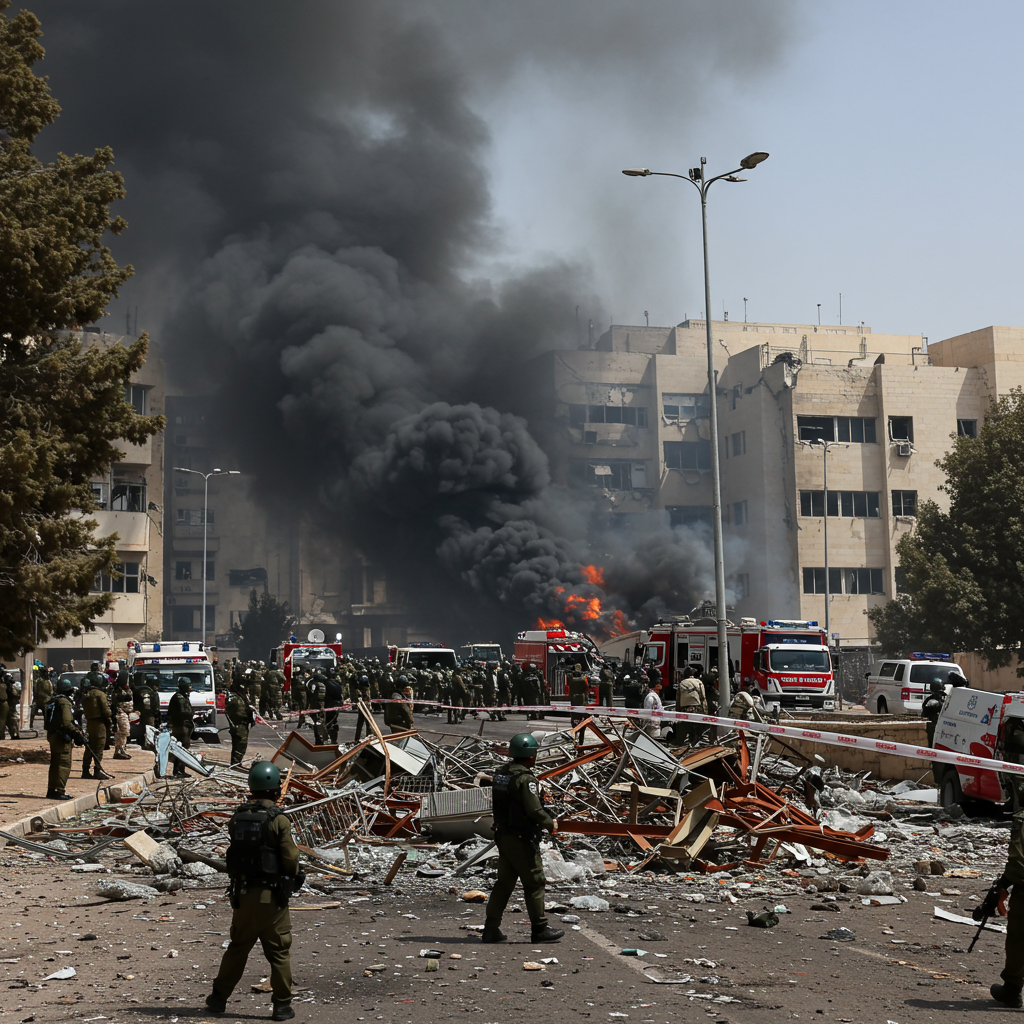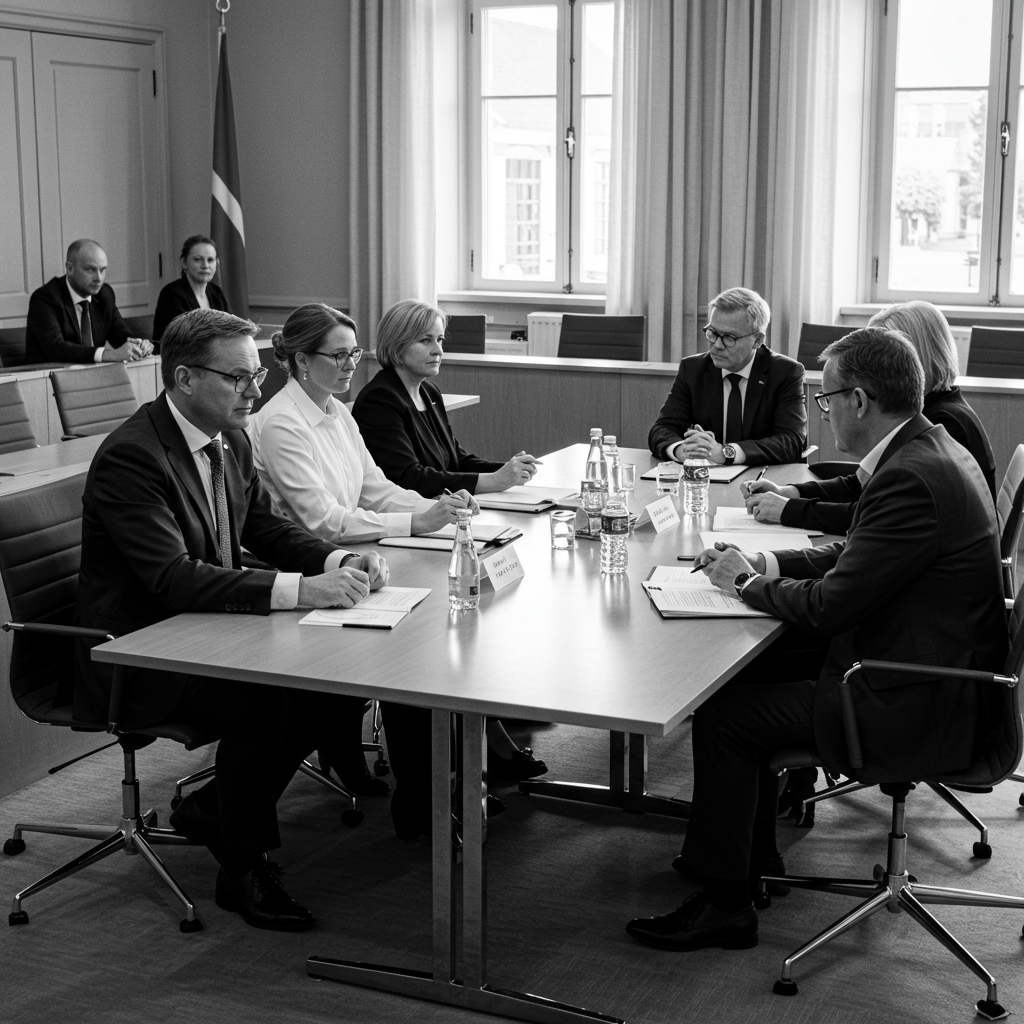Black smoke still drifted above the Soroka Medical Center in Beersheba, Israel, hours after it was struck by an Iranian missile. Twisted metal shrapnel lay scattered across a wide area, some of it believed to be remnants of the missile itself, a stark visual testament to the force of the impact. Emergency vehicles lined the roads, bringing medical staff to aid in the response, while crowds of soldiers, police, and rescue teams gathered at the hospital’s entrances.
The scene was one of controlled chaos as ministers arrived to express outrage over the strike. While Iran claims its target was a military site less than 3km away, Israeli officials, including Deputy Foreign Affairs Minister Sharren Haskel, have described the strike on Soroka – the primary medical center for the entire Negev region – as “deliberate” and “criminal.”
Amidst the emergency teams, Alon Uzi stood outside with his belongings. A patient receiving treatment in the emergency department, he recounted the terrifying moments when the missile hit, catching him before he could reach shelter.
“I was lying in bed,” Alon shared, describing a sudden, loud “big boom.” “And before I could do anything, there was an explosion and part of the ceiling fell and I was covered with white dust.” He had no time to react, hearing only a whistling noise just before the blast.
Inside the emergency reception area, the air was thick with the smell of chemicals and dust. Emergency teams moved through the damaged building, assessing the extensive destruction in the surgical wards that had been hit. Patients were being carefully evacuated on stretchers from deeper within the complex.
Hospital staff confirmed a fortunate circumstance: patients in the surgical wards directly affected had previously been moved to the hospital’s underground emergency shelters earlier in the conflict. Professor Asher Bashiri, director of the maternity ward, described the damage visible from his office as “unbelievable.” The upper part of the building was cracked, fire had erupted in the initial hours, and everything looked “broken.” He emphasized how lucky they were to have moved patients earlier, stating, “It could have been so much worse. But we are still living in an unbelievable situation. It’s not finished… We’re just happy that we’re alive.”
According to Israel’s Ministry of Health, 71 people were injured in the attack. Hospital director Shlomi Codish confirmed that the northern surgical building bore the brunt of the impact, with several wards demolished and extensive damage spread across the entire hospital campus. Due to the scale of the damage and concerns about potential structural collapse, the hospital planned to transfer over 200 patients to other medical facilities in the coming hours.
Israeli leaders were swift and strong in their condemnation. Culture Minister Miki Zohar called Iran a “regime that is trying to kill innocent people” and vowed a powerful retaliation from Israel. Asked about Israel’s own history of striking hospitals in Gaza – locations Israel claims are used by Hamas – Zohar drew a sharp distinction, stating that Israel warns civilians to evacuate beforehand, unlike Iran. Defence Minister Israel Katz accused Iran’s Supreme Leader of committing “war crimes of the most serious kind” and pledged accountability. Prime Minister Benjamin Netanyahu echoed these sentiments, accusing Iran of deliberately targeting civilians and promising to “exact the full price from the tyrants in Tehran,” adding that “no one is immune.”
The strike on Soroka hospital marks a significant escalation on the seventh day of intense hostilities between Israel and Iran. While Iran maintains it targeted a military site near the hospital, Israel views the attack as a deliberate targeting of civilians and medical infrastructure, a violation of international law.
The hospital attack was one of multiple sites hit by Iranian missiles that day, including a business district in Ramat Gan, near Tel Aviv, which also sustained damage and injured civilians. Israel has reported a total of 271 people injured and at least 24 killed since the conflict began. Casualty figures reported by Iran have varied significantly, with one human rights group estimating a death toll of 639 in Iran since the fighting escalated.
This exchange follows a period of increasingly direct confrontation. Just days before the hospital strike, Israel had conducted extensive air strikes on Iranian territory, targeting military facilities, weapons depots, and, notably, sites linked to Iran’s nuclear program. These included strikes on the Natanz enriched uranium facility and the unfinished Arak heavy water reactor, a site capable of producing plutonium for nuclear weapons. Israel claims these strikes aimed to degrade Iran’s nuclear weapons capability, alleging Iran has recently taken steps to weaponize its enriched uranium stockpile.
The International Atomic Energy Agency (IAEA) confirmed the Arak reactor was hit, though it contained no nuclear material at the time. Satellite imagery showed clear damage to the reactor building and adjacent heavy water production facilities. While Israel asserts it crippled these sites, some analysts note that key underground facilities, like the enrichment plant at Fordo, are particularly resilient, with only weapons like the US-made GBU-57 Massive Ordnance Penetrator potentially capable of destroying them.
This escalating conflict is prompting international concern. The UN High Commissioner has condemned the treatment of civilians and called for restraint, a plea echoed by the International Committee of the Red Cross and the World Health Organization, who stress that hospitals must be protected under international law.
The possibility of the United States being drawn directly into the conflict looms large. US President Donald Trump is reportedly weighing a decision on direct involvement within the next two weeks, contingent on potential negotiations with Iran. The US has made it clear its top priority is preventing Iran from developing a nuclear weapon, believing Iran is closer than ever to achieving this. Iran has issued stern warnings against any US intervention, threatening severe consequences for the entire region. Meanwhile, diplomatic efforts continue, with European foreign ministers meeting their Iranian counterpart and US and Iranian negotiators reportedly engaged in phone conversations, though Iran has stated negotiations cannot occur under bombardment.
The precarious balance of this war, marked by reciprocal strikes on sensitive targets, underscores the risk of a wider conflict engulfing the region. Both sides possess the means and apparent willingness to escalate, whether through the type of weapons used or the targets chosen, pushing the situation closer to a dangerous precipice.




